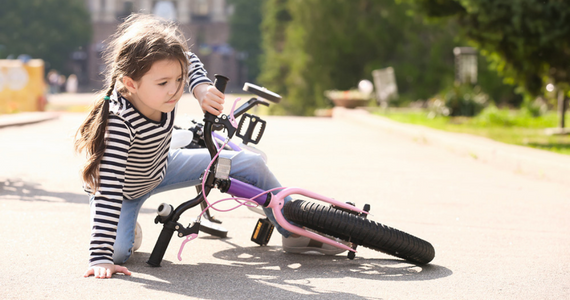We all want the very best for our kids and as much as we would like to shield them from the difficult aspects of life, sadly we can’t keep them from facing challenges along the way – both big and small.
The term ‘helicopter’ parenting has been bandied around a bit in recent years and refers to parents hovering over their children, with this well-meaning hyper vigilance aimed to keep them out of harm’s way. The problem with this style of parenting is that it can lead to children being so shielded from life’s mishaps that they don’t develop coping mechanisms.
It’s important for kids to learn how to cope when things don’t go well and deal with the big emotions that accompany life’s problems. After all, life only tends to get more challenging as we move from childhood into adulthood, and with the ability to bounce back more important than ever, by actively helping your kids develop resilience, you’ll be setting them up with important skills for life.
What is resilience?
Although the term ‘resilience’ is talked about a lot, it’s not always well understood. Resilience is not about putting on a brave face in an unfortunate situation or developing such a thick skin that we learn not to care about what happens to us. Resilience is the ability to acknowledge a challenging situation or negative event, employ coping strategies, and rebound to feel okay again. That does not mean that you don’t react or feel strong emotions, just that you are able to recover and continue on with your life.
This can be a lot easier said than done for us grown-ups with all our life experiences and coping skills that we can draw upon, but it can be particularly challenging for little ones, teens and even young adults.
How do we help our kids foster resilience?
The good news is that resilience is a skill that can be learned and built upon and when we help our kids, we as grown-ups can become more resilient too!
Each day, our kids are internalising messages about the world and their place in it and that inevitably includes exposure to stressors. However, that’s not all bad. Gradual exposure to stress, at manageable levels, actually helps children become more resilient. Their brains are encoding each experience, whether it’s minor like handing in homework late or more significant like being bullied.
Each experience they have creates new neural pathways to help them in future situations and assist them to develop their own coping mechanisms they can call upon in future.
A helping hand
There is one key thing that can help build resilience and that’s the role of supportive adults in children’s lives. To help kids navigate problems and bounce back from setbacks it helps to consider the following framework.
The “Three C’s”:
Connection: Children who feel a sense of connection with others are more equipped to handle problems. We connect with our kids when we spend time with them – giving them our full and present attention, listening to their hopes and fears and feeling their joy, and their sadness.
Consistency: Children need a foundation of consistency to be in the best possible place to cope with change. This can take many forms and could include consistency of routine, location or relationships. Establishing, and committing to threads of consistency in your child’s life anchors them as other pieces shift and move and provides a sense of stability in an uncertain world.
Comfort: A big dose of comfort when needed can help a child to be more courageous. Knowing that someone has their back and is there to comfort them when they fall can empower a child to take risks.
We can’t always wrap our children in cotton wool and prevent them from experiencing unpleasant situations – but we can do our best to equip them to deal with difficulties and be there to help when they need a guiding hand.



